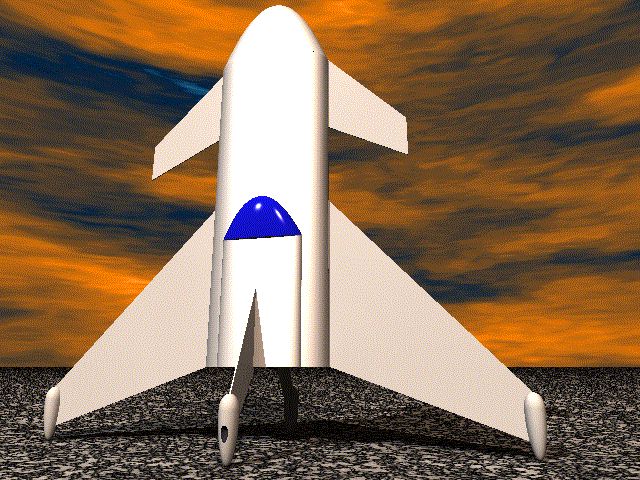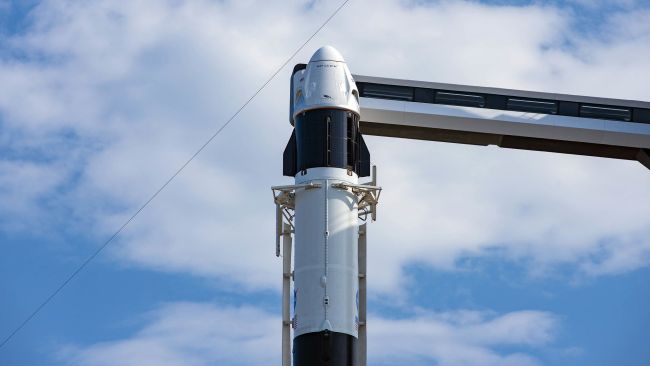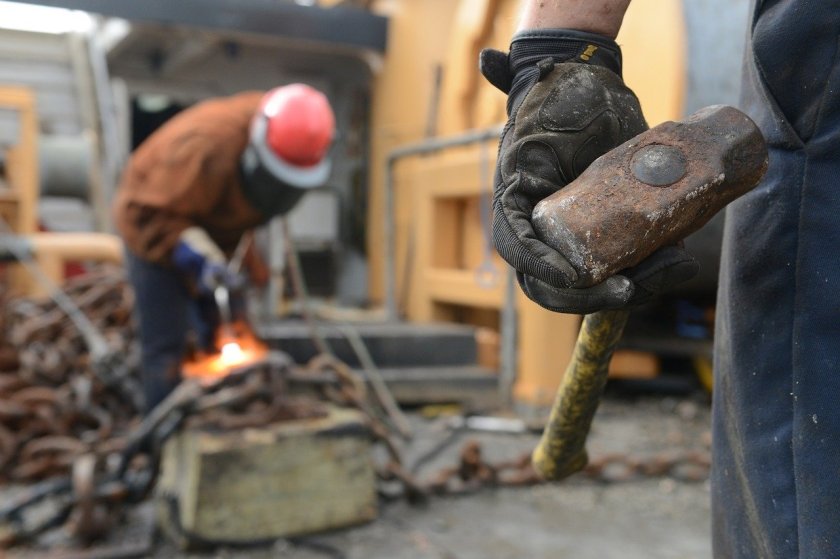
Years and years ago, I, along with Science Fiction writer and NASA scientist Geoffrey Landis put together a concept we called “SpaceCub.” The premise was a rocket that could be built as a kit by well-heeled hobbyists, carry a person up about 100 miles and return safely. It was not intended to make orbit, a far, far more difficult task, just a suborbital up and down. We believed that there would be a market for such a vehicle, that people would buy it. That people would fly it. Making and selling such a vehicle a business could make money that could be used to improve and extend the performance, of successor vehicles. Longer range. Larger capacity. Something transatlantic capable, then transpacific. Finally orbital. All done incrementally through private industry without the need of any government financing except possibly “payment for services rendered” (if they wanted to buy vehicles, or buy flights on vehicles, we’d be more than happy to take their money, at least after careful consideration of what strings might come with that money).
During the time that we were actively working on SpaceCub, we presented at the Northeast Space Development Conference in 1994, the International Space Development Conference in 1995, and a couple of smaller venues. Articles were published about SpaceCub in Popular Mechanics, in New Scientist, and the Brazilian magazine ISTOE. I was interviewed about SpaceCub for an AAAS radio broadcast (and really wish I had a copy of that broadcast, but such is life).
And that’s where it ended. Not being any kind of gifted fund-raiser and not having anyone else to pick up the torch, SpaceCub never went beyond those initial paper studies. Not in itself anyway. Not long after the SpaceCub idea started making waves, the Ansari X-Prize was announced, a then-proposed $10 million prize to the first company to send a crew of three 100 km up and then do it again with the same vehicle within, I think it was, two weeks. I spoke by phone to one of the founders of the X-Prize and he said that SpaceCub did not influence them to create the prize. However, in a separate conversation with Geoffrey Landis, he noted that before us nobody was talking about manned suborbital flight. Nobody. So coincidence? Or were they influenced by us and simply not willing to admit to that (fearing, perhaps, that I’d demand remuneration). So perhaps we did provide the impetus that led to the X-Prize, and in so doing led to Rutan’s SpaceShip One, to Virgin Galactic being founded, and further were part of the impetus to the creation of SpaceX and other up and coming firms in the field of private, commercial space flight.
Perhaps.
The website on which I had my old pages describing SpaceCub is long defunct. The hosting service has closed shop. However, thanks to the Internet being forever thanks to the wonders of the Wayback Machine, I have been able to recover the original pages and include them here as one, long post (with minimal editing, mainly to delete defunct links).
So, here it is, combined into one:
The original SpaceCub pages (lightly edited):
News and information for the first “General Aviation” spacecraft
SpaceCub is designed to be a totally private, manned, reusable, suborbital rocket. It is planned to have sufficient performance to reach space and to allow ordinary individuals a taste of space flight including such experiences as take-off acceleration, weightlessness, sunrise (and sunset) from space, and reentry.
Aviation was, originally an activity for very few, a handful of pioneers who often died in the pursuit of their dream of flight. Yet that handful swiftly grew until thousands, them millions could fly in aircraft of all sizes and designs. While most of these people flew as passengers large numbers were able to pilot aircraft themselves. This opportunity has not been possible for those who dream of flying in space. Only a handful of individuals, selected by national governments, do that. SpaceCub is designed to change that. It is intended to make the breakout from space being merely the realm of a handful of pioneers to the workplace, living space, and even the playground of a great many people. The first step in that path is to allow ordinary people, not the chosen of any government, to experience a taste of flight in space.
The announcement of the X-Prize has made SpaceCub more than possible. It has made it, or something very like it, virtually inevitable. The X-Prize is similar in concept to the Kremer Prizes for man-powered aviation. It is to be a $5-10 million prize to the first private group (not government funded or run) to launch a manned, suborbital rocket, one capable of carrying a crew of three or more, to an altitude of 100 km (62 miles) twice within a fourteen day period. Such a prize would almost completely recover the development cost of a vehicle like SpaceCub.
Frequently asked questions:
What is the Spacecub?
The Spacecub is a manned, suborbital rocket meant to be built, operated and flown by individual hobbyists. It is planned to be fully reusable and not to drop pieces of itself along the way. In many ways the Spacecub can be thought of as a fully reusable, manned version of the Viking rocket of the early ’50’s since it has the same basic performance and general capability.
In addition to the hobbyist market, SpaceCub could also be attractive to “adventure tours” types of businesses (such as the outfit that sells the opportunity to fly Russian fighters or Interglobal Space Lineswhich sells, among other things, zero g aircraft flights) and those who currently launch sounding rockets.
With the exception of the computers and electronics, most of the features of the Spacecub are rather old technology. Most of the technical issues have been dealt with thirty or more years ago.
What are the numbers for the Spacecub?
The Spacecub will have the following dimensions:
Length: 11.5 m (38 ft 4 in.)
Span: 11.5 m (38 ft 4 in.)
Height: 4 m (13 ft) (ventral-dorsal fin tip to tip)
Fuselage dimensions: 1.5 m X 3 m X 10 m(5 ft X 10 ft X 33′ 4″)
Weights:
Empty weight: 2800 kg
Payload: 500 kg
T-O weight: 18000 kg
Performance:
Maximum altitude reached: 245 km
Maximum range: 612 km (at 100 km peak altitude)
(altitude is traded for range to some extent)
Maximum velocity at burnout: 1850 m/s (4138 mph, about Mach 6)
Flight time: 10-20 min
How much will the Spacecub cost?
We’re aiming at keeping the cost of the Spacecub down to about $250,000-500,000 in kit form with a fully constructed version at perhaps twice that. This is comparable to at least one high-end kit plane, a plane that has sold upwards of 50 kits to date. (According to figures listed in Jane’s All the World’s Aircraft.) [Ed: 1994 numbers]
How many passengers will it carry?
The current version of the Spacecub is a four seat vehicle, but there are plans to use the experience gained in the first Spacecub to design and build new vehicles with greater range, more passengers, and larger payload capacity. [Ed: First concept was a single seater, but when the X-Prize was announced we enlarged it to make a 4 place vehicle.]
Why is the Spacecub suborbital? Why not make an orbital vehicle?
It takes a speed of nearly 8000 m/s to make orbit. However, fighting gravity and shouldering aside the atmosphere uses power that makes the rocket require a velocity potential (a “delta v”) of about 9500 m/s. With kerosene and oxygen as propellants the rocket would need 20 times as much propellant as the empty weight of the rocket. The suborbital Spacecub only makes a speed of 1850 m/s but fighting gravity and the atmosphere requires a “delta v” of about 4000 m/s. To do this the rocket needs fuel of 4.5 times the rocket’s empty mass. This is much, much easier to do than 20 times. However, all is not lost. As more experience is gained with vehicles like SpaceCub, it will be possible to design larger and faster versions, leading up to an orbital vehicle. All will be done in easy stages, making money with each step. This minimizes both market and technical risks at each stage.
Have any been built or flown yet?
No. It’s just finished conceptual development [Note: Since the time this was written, the concept has been “back burnered.” Further develop should be forthcoming.]. However, a series of scale models have flown, testing the stability of an early configuration in subsonic flight. These model flights have provided valuable information toward the eventual building of a flying models. (Many thanks to Brent for the work.) The latest configuration, aimed at possibly winning the X-Prize, has not yet had these model flights, however work toward doing so is underway. Current plans call for seeking financing in 1 – 2 years, with a prototype about 2 years after that, and first kit sales 6 months to a year after that depending on how flight tests go.
What is the X-Prize?
The X-Prize is a prize of the same nature of the old Ortig prize offered for the first non-stop transatlantic flight (won by Charles Lindberg), and the Kremer prizes for various man-powered aircraft milestones. It is to be a prize of $5-$10 million to the first private vehicle (government programs need not apply) to fly twice within fourteen days (same vehicle, so it must be reusable) to an altitude of 100 km. The vehicle must be able to carry three people, which was the reason for the recent change in SpaceCub design. [Ed: This prize was eventually won by Dick Rutan with his Spaceship One.]
What does the Spacecub look like?
The current design has a ) main body seven meters (21′) long, an elliptical in cross section–1.5 meters high and 3 meters across. The nose is conical and two meters long with a rounded tip and rounded “shoulders” where it meets the main body. The rocket has swept wings with root chord of 4 meters and a tip chord of 1 meter with the trailing edges swept back to a point 1.5 meters behind the mainbody. The span is 11.5 meters (33′). There are two vertical fins, one dorsal and one ventral, swept, two meters in root chord, 1 meter tip and with trailing edges also swept back 1 meter. Tip to tip span of the vertical fins is 4 meters.
How does the Spacecub take off? Vertically or horizontally like an airplane?
The Spacecub both takes off and lands vertically. This means that some fuel must be reserved for landing. This also means that virtually any flat surface twelve to fifteen meters across can serve as an emergency landing point.
If It’s VTOL, why wings?
Suborbital vehicles reenter on much steeper paths than do orbital vehicles this means that they dive into deeper atmosphere while retaining more of their velocity than orbital vehicles. High speed and denser atmosphere add up to strong G forces. Computer models show that a capsule configuration, even a lifting capsule like Gemini or Apollo would experience reentry accelerations of 12-15 G’s. This was considered too high for a hobbyist spacecraft.
The only other option was a lifting reentry to keep the vehicle at higher altitude, and in thinner atmosphere, until it had lost more of its speed. Lifting bodies were one possibility but problems with layout and lofting, particularly when it was considered that SpaceCub was meant to be built by hobbyists, arose. That left wings as the only other option. Wings, of course, meant a penalty in such areas as weight and drag during ascent, but they proved the only viable option for the initial SpaceCub design.
What will the experience of flying the Spacecub be like?
The flight will start, with the Spacecub fueled and checked, with the pilot laying back in the seat, with the nose of the Spacecub pointed at the sky. Mist, visible through the Spacecub’s canopy, will drift around the front half of the Spacecub, condensation around the craft’s liquid oxygen tank.
Then the engines will light. The engine’s roar will shake the cockpit as the Spacecub begins to climb slowly into the sky. Acceleration will be gentle, a slight heaviness at first that will slowly increase until the pilot feels three times his own weight. In just over two minutes the Spacecub is over twelve miles up and breaking through the sound barrier. The engine noise vanishes and all becomes relatively quiet, with the only noise being that carried through the body of the SpaceCub itself.
Outside the sky becomes darker, first purple, then black. The stars become visible against the black.
Then, the engines cut out, less than four minutes after launch. All feeling of weight vanishes as the Spacecub begins its ballistic arc. For the next two minutes the Spacecub continues to coast upward before the ever-present pull of gravity begins to drag it back down. Then three minutes of falling and the rocket’s wings begin to again feel the bite of the atmosphere. The air around the Spacecub begins to glow with heat. The skin of the Spacecub begins to warm as acceleration builds. The airflow over the wings generates lift, and the Spacecub starts to pull up from its dive. At an altitude of more than 20 miles the Spacecub comes level, still moving more than 3 times the speed of sound. The Spacecub slows, shedding energy and begins a gentle descent. At about 12 miles it drops back through the speed of sound.
The Spacecub glides to the landing target and pulls up in an increasingly steep climb, trading speed for altitude. When it comes vertical the engines light and the Spacecub sinks vertically on its tail.
Why not use a parachute for landing, like the old Space Capsules?
Those old capsules set down at sea for a reason. Landing a large vehicle by parachute is hard on anyone in it. Such landings can end in broken bones and internal injuries. The Russian Soyuz capsules use a parachute landing, but even they use braking rockets to slow them at the last moment.
Well, why not a horizontal landing, like an airplane?
The Spacecub would have a stall speed of nearly 80 miles an hour, a power-off sink rate, in stable glide, of over 1000 feet per minute. That falls somewhere between a very bad glider and a very bad parachute. The key phrase there is “very bad.” That combination would make for a difficult and dangerous landing. The Spacecub is aimed at hobbyists and pilots with a moderate amount of experience, not highly trained and experienced jet pilots.
Other problems arise from the need to flight test SpaceCubs. Each builder will have to test his own, or have it tested for him. With a vertical takeoff/horizontal landing there is no provision for taxi tests, hover tests, short hops, or other steps that can be made for either VTVL or HTHL modes. This makes the testing process more dangerous.
Still other problems with horizontal landing include a second set of, heavier, landing gear for horizontal landing, accessory equipment required at the landing site to erect the rocket for takeoff, very large peak structural loads on the airframe during landing (that descent rate is hard on the structure), protecting tires from reentry heat, and reduced options for landing sites in case a navigation error or emergency prevents reaching the original target site.
All that said, however, the vertical landing mode is one of the greater technical risks for SpaceCub. In particular, difficulties may arise in converting the engines chosen for SpaceCub for both reliable in-flight restart and continuous and precise throttling. While there is no doubt that both of these problems can be solved, there is a question about whether they can be solved within the projected budget. As a hedge against that possibility a horizontal landing option using an air-cushion landing gear to minimize stress to the airframe is under investigation. Such a system will involve a severe penalty in overall vehicle performance for the weight of the landing gear plus the weight of a separate “go around” engine (more important for HL than for VL). However, the performance should still be sufficient to meet the X-Prize requirements.
What about terrorists? Won’t they be able to use SpaceCubs as weapons?
Short answer, perhaps they could. But in a bit longer answer, they’d be really stupid to try. The SpaceCub has rather short range as missiles go. It has extremely limited payload. And its liquid propellant engines, in particular using liquid oxygen, make launch operations extremely hard to conceal. Furthermore, it comes down as a large, essentially empty vehicle. With the large wings and empty tanks it’s speed in the low atmosphere is something on the order of 150 miles per hour. It’s all metal construction, still hot from reentry, make it a perfect target for both IR and radar guided counterweapons.
There are plenty of better choices if one is seeking a terror weapon, or a battlefield weapon.
How much does fuel cost for each flight?
A flight of maximum performance requires 1200 gallons of kerosene and 2200 gallons of liquid oxygen. With kerosene at $2.00 per gallon and the price of liquid oxygen as quoted by a local supplier of $0.35 per gallon a fully fueled flight would require $3200. [Ed. Note: those were 1994 prices]. That’s expensive, but not out of reach of those who can afford to buy a SpaceCub in the first place.
How many flights will the Spacecub be able to make overall?
With regular inspections of flight critical hardware and occasional overhauls of the engines, just as on aircraft, there’s no particular reason the Spacecub cannot last for years and hundreds, or thousands of flights. SpaceCub is designed with 50% margins throughout, which is a general standard and helps to keep high reliability and a long lifetime.
What preparations are needed to fly the Spacecub again?
The Spacecub will require refueling, recharging of the batteries, resupply of the pressurized helium tanks (used to pressurize propellant tanks and to power the RCM’s during ballistic flight), and a preflight checkout taking no more than an hour or so to be ready to fly again. This is an off the cuff estimate, though, until we actually have flight experience with the vehicle.
What kind of kit will the Spacecub be?
As presently conceived the Spacecub will be available in a “materials and components” kit. Actuators, sensors, engines, and complex parts such as those containing compound curves or taking high stresses (nose cone and wing spars as examples) will be pre-formed. Titanium parts will also be pre-cut to relieve the builder from working this difficult material.
What kind of materials will the Spacecub be made of?
The Spacecub uses mostly aluminum and titanium in its structure. The propellant tanks are sheet aluminum. The tank support structure is aluminum. The skin and skin support structure is titanium. Should titanium prove to be untenable, it would be possible to use steel instead, but the result would be either a more fragile vehicle (thinner skin and framing members) or a heavier vehicle, or both. Either result would reduce the performance of the spacecraft.
What will be used for reentry heat shielding?
At the speeds of the Spacecub, its size, and its mass, the skin of of the vehicle itself is adequate to survive reentry. The maximum temperature of the craft is less than 800 K (980 F).
What kind of redundancy will the Spacecub have? How will you handle an engine out on landing?
The Spacecub is designed to have three to five (not yet finalized) engines. The rocket engines we are most interested in are the verniers from the Russian RD-107 or RD-108 engines. These engines have been around since the days of Sputnik and have established a simply incredible reliability. Other engines, mostly of Russian make, are also under consideration. In all cases, the ability to make a safe landing, at any point in the flight, should one engine fail, is a major design criterion. In the landing phase, the rocket has shed enough mass that any one engine is sufficient for landing.
Control systems and electronics will be fully redundant, with nice, simple, foolproof mechanical switches for shifting from main to backup systems. Three computers, two GPS receivers, and two inertial platforms will give redundancy in navigation. Even primary structural member have redundancy. The three pressurized propellant tanks carry fuselage loads. Each one is sized, individually, to carry the entire load so that loss of pressure in one, or even two, would not result in loss of the vehicle or its crew.
How automated will the Spacecub be? Will the pilot be able to take control?
The Spacecub is designed so that the entire flight can be made with the pilot doing no more than pushing the “go” switch, or, alternately, with the computer doing nothing but provide data to the pilot who controls the entire flight manually, or any level of automation in between. This will allow pilots with a wide variety of different abilities and experiences to fly the Spacecub. For low experience levels the Spacecub would operate in a highly automated mode. As the pilot gains experience, the level of automation could be dropped until the pilot is flying manually. This makes the SpaceCub its own trainer.
What kind of license will be required to fly the Spacecub?
This is one of a number of yet unresolved legal issues. The Office of Commercial Space Transportation controls private space flights but their regulations, as yet [Ed: at the time this was written, 1994], contain no provision for manned vehicles.
Launching overseas or in International waters is no help. The relevant laws (chiefly Public Law 98-575) applies the restrictions to US persons even when the activities take place outside the US.
Currently [Ed: as of original writing in 1994], there is work underway to get this situation changed and to get a licensing procedure based loosely on aviation regulations enacted which will allow Certificates of Flightworthiness and Spacecraft Pilot’s licenses which will let you file a flight plan and go.
The level I have been recommending for piloting the Spacecub is 250 hours of flight time, instrument and multi-engine ratings, and 10 hours of aerobatic instruction, plus either five hours of dual instruction “in type” (i.e. a supersonic, VTOL, rocket plane), or twenty hours in a high-fidelity simulator, or some combination of the two.
Will the FAA allow the Spacecub to be launched?
The Office of Commercial Space Transportation is now an office within the FAA. It’s mission is explicitly to provide for commercial access to space. While the legal structure does not, at present allow for manned vehicles such as SpaceCub since no commercial manned vehicles exist at present, there are indications that they are amenable to working on developing such a structure if necessary.
SpaceCub could be launched using the same regulations as for unmanned vehicles, but that would not be terribly practical at present. In particular, the liability insurance requirements are prohibitive.
What kind of launch and landing sites will be required?
The Spacecub needs a solid surface to launch from, a supply of liquid oxygen and kerosene (which can be trucked in), compressed helium, and a supply of electrical power to charge batteries. No specialized gantries, launch pads, or other such facilities will be required.
For landing, you need a flat spot to set it down, although it might be nice to have the facilities to take off again.
What is the liability exposure of the Spacecub?
This is an issue for the lawyers to wrangle over. The actual risk factor (to anyone but the pilot within the vehicle) is actually quite low. The total amount of fuel is 1200 gallons. The fuel we are considering is the low volatility Jet A, or JP-5 (military version of the same stuff) so even a complete, catastrophic failure of the fully fueled rocket on takeoff would be less disastrous than a similar failure in a corporate jet. Further, the terminal velocity of the falling rocket in the lower atmosphere is about 300 mph, and the rocket is quite lightweight at that point so a total failure here is limited in extent. Finally, the redundancy and engine out capability of the ship makes the occurrence of such a complete and total failure (or explosion) a very low likelihood event. In practical terms the rocket is little more hazardous, to bystanders, than aircraft of similar fuel capacity.
Some have expressed concern about the presence of liquid oxygen, and the dangers it might add. This effect should be minimal. Again, the amounts involved are small on an industrial scale. Also, the physical separation of fuel and oxygen tanks makes the chance of sufficient mixing to cause a catastrophic explosion remote.
The main causes of explosive failures in rockets are combustion instabilities, destruction by Range Safety Officers (using bombs planted in the vehicle), and hard impacts (crashes). By using well established engines, combustion instabilities can be avoided. Airplane, rather than missile, style operations, will eliminate the need for RSO’s and their bombs (after initial testing). That leaves crashes. Multiple engine redundancy, computer enhanced, fly-by-wire control, and strict operational guidelines (to be developed) will minimize that risk.
What environmental effects will a launch cause?
This was one of the reasons for the choice of propellants for the rocket: kerosene and oxygen. This was to avoid highly corrosive and toxic propellants such as hydrazine or Red Fuming Nitric Acid. The environmental effect would be that of burning 1200 gallons of kerosene in a reasonably efficient system. There appears to be some question, however, over just how efficient that system is. Rockets generally run fuel rich since that provides best performance, and so would burn “dirtier” that kerosene burners on the ground. However, the exhaust is hot enough that the unburned kerosene products would burn quickly in the air. The detailed amounts of pollution would have to be investigated. Still, flight rate is likely to remain low enough for some time that total environmental effect will be negligible.
What about damage to the launch site from the rocket exhaust?
This is still an unknown. While the rocket exhaust is very hot, the total mass and exposure time is low. One trick under consideration for protection of the launch surface is to have the Spacecub carry a water tank that sprays water into the exhaust to carry off the heat. About 120 gallons of water would be enough to carry off all the heat generated in the first ten seconds of flight. After that, the rocket is more than 100 meters up and no longer a danger to the surface below.
What about noise problems on launch and landing?
This is another unanswered question. The reputation rockets have for being really loud comes from the big rockets people are most familiar with. For instance, the Atlas rocket has about 400,000 lbs of thrust on takeoff. The Spacecub has 20,000 lbs or thrust or so on takeoff. The bigger the rocket, the noisier. Just how loud the Spacecub will be is still not known though. From theoretical indications, the SpaceCub should be 1/20th, or 13 dB less loud. It appear that here SpaceCub resembles aircraft more than it does spacecraft. Also, the same water spray under consideration for launch-stand protection would help to deaden this noise.
What International Treaties Affect the SpaceCub?
This is another sticky issue. The main treaties are the 1967 Outer Space Treaty and the 1973 Convention of International Liability for Damage Caused by Space Objects. However, most of the provisions of these treaties can be neatly avoided by simply restricting flights to over the US. Flights to higher altitude will also need some check to avoid any risk of collision, yet such a risk is minute for the altitudes and flight times of the Spacecub.
Why would one want to use or buy SpaceCub?
If one needs a “practical” reason the Spacecub is the fastest means of going up to 600 km. However, “practical” reasons aren’t really what the Spacecub is about. It’s meant for recreational flying. In the Spacecub one could see the sun against a black backdrop. One could experience weightlessness. One could see the Earth from above its atmosphere.
What about emergency considerations? Can the pilot extract himself from the rocket in an emergency?
In most possible failure modes, the pilot would be best advised to stay with the rocket. In particular, the pilot would have to stay with the rocket at supersonic or extra-atmospheric flight. The multiple engines provide the ability to the Spacecub to continue flying and either abort to a controlled landing or complete the flight even should an engine fail.
The prototype, however, will probably have some sort of escape system.
Perhaps the most serious potential problem for pilot safety is loss of cabin pressurization. As a shield against this a look is being taken at the Space Activity Suit, a skintight elastic garment that provides pressurization by direct pressure of the fabric. The suit has been tested to pressures of at least 3.5 psi and appears to be adequate for emergency use until reentering the lower atmosphere.
Where does it go from here?
At this point, SpaceCub has gone about as far as paper analysis can carry it. Most of what remains in that area is just fiddling with details. The next step is to get actual experience with hardware. The following projects have been suggested to continue:
1/10 scale flight model (flight through the transonic regime)
full scale mock up for wind tunnel testing (probably expensive, if only for wind tunnel time)
2/3 scale tow glider (test control and handling qualities at low speeds)
full scale cockpit mockup (check human factors)
In depth computer analysis (CFD, weights and structures)
How can I find out more?
One way would be to stop in at [Ed: defunct website deleted] and ask.
Forget finding out more, How can I get involved?
SpaceCub is always looking for participants, people who have skills and abilities they can bring to the project. What are being sought are not employees, but the initial core of people around which to build the project. You can discuss the project at the private news site [Ed: defunct website] or write to [Ed: defunct email] to find out more about these opportunities.
SpaceCub Mass and Components Breakdown
All masses in Kilograms
| System |
Subsystem |
Component |
Quantity |
Mass ea. |
Total Mass |
| Airframe |
|
|
|
|
|
| |
Fuselage Body |
|
|
|
|
| |
|
Ring Frames |
20 |
5 |
100 |
| |
|
Stringers |
10 |
7 |
70 |
| |
|
Access Panels |
8 |
0.5 |
4 |
| |
|
Climbing Steps |
8 |
0.25 |
2 |
| |
|
Spring Step Covers |
8 |
0.25 |
2 |
| |
|
Retractable Step |
1 |
1 |
1 |
| |
|
Skin |
1 |
253 |
253 |
| |
|
Stringer Brackets |
200 |
0.003 |
0.6 |
| |
|
Rivits |
4400 |
1E-04 |
0.484 |
| |
Wings |
|
|
|
|
| |
|
Spar |
1 |
100 |
100 |
| |
|
Aux. Spar |
1 |
100 |
100 |
| |
|
Ribs |
20 |
1 |
20 |
| |
|
Spoilers |
4 |
14 |
56 |
| |
|
Spoiler Hinges |
4 |
2.6 |
10.4 |
| |
|
Spoiler Actuators |
4 |
1 |
4 |
| |
|
Return Springs |
12 |
0.1 |
1.2 |
| |
|
Landing Struts |
2 |
10 |
20 |
| |
|
Leading Edges |
2 |
3 |
6 |
| |
|
Skin |
1 |
205 |
205 |
| |
|
Rivits |
1500 |
1E-04 |
0.165 |
| |
Vertical Stabilizer |
|
|
|
|
| |
|
Spars |
5 |
2 |
10 |
| |
|
Ribs |
8 |
1.2 |
9.6 |
| |
|
Spoilers |
4 |
7 |
28 |
| |
|
Spoiler Hinges |
4 |
1.3 |
5.2 |
| |
|
Spoiler Actuators |
4 |
1 |
4 |
| |
|
Return Springs |
12 |
0.1 |
1.2 |
| |
|
Landing Struts |
2 |
10 |
20 |
| |
|
Leading Edges |
2 |
1.5 |
3 |
| |
|
Skin |
1 |
40 |
40 |
| |
|
Rivits |
800 |
1E-04 |
0.088 |
| |
Canard |
|
|
|
|
| |
|
Spar |
2 |
10 |
20 |
| |
|
Ribs |
8 |
0.75 |
6 |
| |
|
Leading Edges |
2 |
1 |
2 |
| |
|
Mounting Swivel |
2 |
2 |
4 |
| |
|
Mounting Plate |
2 |
5 |
10 |
| |
|
Canard Actuators |
4 |
1 |
4 |
| |
|
Skin |
1 |
58 |
58 |
| |
|
Rivits |
600 |
1E-04 |
0.066 |
| Propellant System |
|
|
|
|
|
| |
O2 Tank |
|
|
|
|
| |
|
Pressure Shell |
1 |
65 |
65 |
| |
|
Anti-slosh baffles |
4 |
0.5 |
2 |
| |
|
Anti-Vortexing Baffle |
1 |
0.25 |
0.25 |
| |
|
Surface Tension PMD |
1 |
2 |
2 |
| |
|
Fill Line |
1 |
3 |
3 |
| |
|
Fill Check Valve |
1 |
1 |
1 |
| |
|
Relief Valve |
1 |
1 |
1 |
| |
|
Feed Line |
1 |
10 |
10 |
| |
|
Purge Drain Line |
1 |
2 |
2 |
| |
|
Drain Valve |
1 |
1 |
1 |
| |
|
Level Sensor |
1 |
2 |
2 |
| |
|
Mounting Brackets |
60 |
0.03 |
1.8 |
| |
|
End Cap Hardpoints |
8 |
2 |
16 |
| |
Kerosene Tank |
|
|
|
|
| |
|
Pressure Shell |
2 |
50 |
100 |
| |
|
Anti-slosh Baffles |
10 |
0.3 |
3 |
| |
|
Anti-vortexing Baffles |
2 |
0.25 |
0.5 |
| |
|
Surface Tension PMD |
2 |
2 |
4 |
| |
|
Fill Line |
1 |
5 |
5 |
| |
|
Fill Check Valve |
2 |
1 |
2 |
| |
|
Relief Valve |
2 |
1 |
2 |
| |
|
Feed Line |
2 |
6 |
12 |
| |
|
Purge Drain Line |
2 |
2 |
4 |
| |
|
Level Sensor |
2 |
2 |
4 |
| |
|
Mounting Brackets |
150 |
0.03 |
4.5 |
| |
|
End Cap Hardpoints |
16 |
2 |
32 |
| |
Landing O2 Tank |
|
|
|
|
| |
|
Outer Shell |
2 |
4 |
8 |
| |
|
Anti-Vortexing Baffle |
2 |
0.125 |
0.25 |
| |
|
Surface Tension PMD |
2 |
1 |
2 |
| |
|
Fill Line |
2 |
3 |
6 |
| |
|
Fill Check Valve |
2 |
1 |
2 |
| |
|
Relief Valve |
2 |
1 |
2 |
| |
|
Feed Line |
2 |
6 |
12 |
| |
|
Purge Drain Line |
2 |
2 |
4 |
| |
|
Drain Valve |
2 |
1 |
2 |
| |
|
Level Sensor |
2 |
2 |
4 |
| |
|
Mounting Brackets |
150 |
0.03 |
4.5 |
| |
Landing Kerosene Tank |
|
|
|
|
| |
|
Outer Shell |
2 |
3 |
6 |
| |
|
Anti-Vortexing Baffle |
2 |
0.125 |
0.25 |
| |
|
Surface Tension PMD |
2 |
2 |
4 |
| |
|
Fill Line |
2 |
2 |
4 |
| |
|
Fill Check Valve |
2 |
1 |
2 |
| |
|
Pressure Relief Valve |
2 |
1 |
2 |
| |
|
Feed Line |
2 |
2 |
4 |
| |
|
Feed Valve |
2 |
1 |
2 |
| |
|
Purge Drain Line |
2 |
1 |
2 |
| |
|
Purge Valve |
2 |
1 |
2 |
| |
|
Level Sensor |
2 |
1 |
2 |
| |
|
Mounting Brackets |
40 |
0.03 |
1.2 |
| Accomodation |
|
|
|
|
|
| |
Cockpit |
|
|
|
|
| |
|
Pressure Shell |
1 |
100 |
100 |
| |
|
Windshield |
1 |
20 |
20 |
| |
|
Canopy |
2 |
15 |
30 |
| |
|
Canopy Frame |
2 |
6 |
12 |
| |
|
Canopy Hinge |
2 |
4 |
8 |
| |
|
Canopy latch |
4 |
2 |
8 |
| |
|
Canopy Gasket |
2 |
2 |
4 |
| |
Air Supply |
|
|
|
|
| |
|
Compressed Air Tank |
2 |
5 |
10 |
| |
|
Tank Pressure Guages |
2 |
2 |
4 |
| |
|
Flow Regulator |
2 |
2 |
4 |
| |
|
Cockpit Pressure Guage |
1 |
1 |
1 |
| |
Seating |
|
|
|
|
| |
|
Couches |
4 |
10 |
40 |
| |
Controls and Instruments |
|
|
|
|
| |
|
Computer Motherboards |
3 |
3 |
9 |
| |
|
GPS Receiver |
2 |
2 |
4 |
| |
|
Inertial Platform |
2 |
5 |
10 |
| |
|
LCD Displays & Controls |
3 |
2 |
6 |
| |
|
Q Ball |
1 |
5 |
5 |
| |
|
Guages and Instruments |
1 |
20 |
20 |
| |
|
Switches, etc. |
1 |
5 |
5 |
| |
|
Radios |
2 |
2.5 |
5 |
| Electrical |
|
|
|
|
|
| |
Batteries |
|
1 |
110 |
110 |
| |
Wiring Harness |
|
1 |
10 |
10 |
| |
Power Conditioning |
|
1 |
5 |
5 |
| Main Propulsion |
|
|
|
|
|
| |
Rocket Motors |
|
4 |
71 |
284 |
| |
Jetavators |
|
|
|
|
| |
|
Jetavator Rings |
4 |
5 |
20 |
| |
|
Mounting Brackets |
4 |
20 |
80 |
| |
|
Actuators |
8 |
5 |
40 |
| |
Box Truss |
|
|
|
|
| |
|
Struts |
99 |
0.5 |
49.5 |
| |
|
Joint Plates |
52 |
0.25 |
13 |
| Reaction Control System |
|
|
|
|
|
| |
Motors |
|
|
|
|
| |
|
Thrust Chambers |
24 |
0.5 |
12 |
| |
|
Solenoid Valves |
48 |
0.25 |
12 |
| |
|
Mounting Brackets |
24 |
0.25 |
6 |
| |
Propellant Feed |
|
|
|
|
| |
|
Main Pressure Regulators |
2 |
1 |
2 |
| |
|
Low Pressure Tanks |
4 |
2 |
8 |
| |
|
Helium Distribution Lines |
8 |
1 |
8 |
| |
|
Feed Lines |
48 |
0.125 |
6 |
| |
|
High Pressure Tanks |
2 |
10 |
20 |
| |
|
|
|
|
========= |
| |
|
Subtotal |
|
|
2454 |
| |
|
Mass growth allowance |
|
|
366 |
| |
|
|
|
|
========= |
| |
|
Empty Weight |
|
|
2820 |
| |
|
Payload |
|
|
500 |
| |
|
Landing Fuel |
|
|
700 |
| |
|
|
|
|
========= |
| |
|
Reentry Weight |
|
|
4020 |
| |
|
Takeoff Fuel |
|
|
14070 |
| |
|
|
|
|
========= |
| |
|
Takeoff Weight |
|
|
18090 |
SpaceCub Development Cost Estimates
| Initial Design Through Blueprints |
450,000 |
| Engine Development |
1,000,000 |
| Software Development |
600,000 |
| Engine Static Testing |
1,300,000 |
| Construction of 3 Prototypes |
1,050,000 |
| Flight Testing |
1,750,000 |
| |
========= |
| Total |
6,150,000 |
This is a rough estimate, based largely on parts count. [Ed: A friend of mine, at the time who worked for McDonnal Douglas said that for an initial estimate figure “X” man hours per component and a loaded hourly rate of “Y” dollars. That’s the basis for those figures. Dick Rutan’s “SpaceShip One” cost about four times that much to develop, but it was a much more complicated project. Unfortunately I was in no position to raise that kind of money. Would have been interesting to see if we could have done it]
Ongoing Projects [Ed: as of the original 1994-1997 writing of this. Sadly, the need of employment and caring for my family took over and things came to a grinding halt.]
- Trade Study analysis software
This is a project to develop a software package to perform trade studies on the SpaceCub. It will allow the user to put in different parameters such as fuselage size and shape, nose cone size and shape, wing span, sweep, and thickness, canard size and placement, and so on. The software would then draw a picture of the design, make a weights and balances estimate, and estimate subsonic and supersonic drag and stability.
- Develop 3D drawing engine (Done)
- Develop SpaceCub design specification engine (In Progress)
- Develop aerodynamic characteristics calculation engine
- Develop user interface
- SpaceCub performance simulator
This is a project to develop a software package to take the results of trade studies produced by the above and run a variety of standard flight profiles to gauge performance of the various packages. This is to be an extension of the existing package used for the initial analysis
Future projects [Ed: None of which happened, sad to say]
- 10% scale flight model.
- This is to be a model, possibly radio controlled, to test stability of the design in subsonic and low supersonic flight regimes.
- Cockpit mock-up/simulator
- This will first be a non-functional mock-up to test human factors for the full scale system and later will be equipped with functioning controls to run a computer flight simulator.









